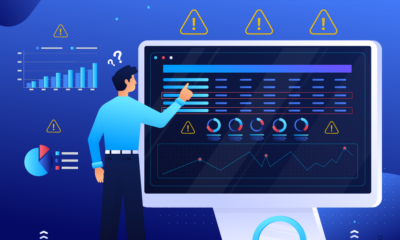It’s time to be excited about the great migration.
The biggest shake-up in the marketing analytics world is that Google Analytics as we know it is going to be sunset and will eventually stop collecting data in July 2023 (October 2023 for GA360 customers). There were mixed responses, to say the least – conflicting tweets, memes and disappointed forum posts were generally the first reactions to the news, and it proves that this drastic move needed to happen at some point.
As more practitioners and marketers adopt the new Google Analytics 4 (GA4), the benefits are starting to flip the mood from nervousness to excitement.
The version of GA that’s been around for over a decade, Universal Analytics, is hard to leave behind since it’s such an embedded part of web measurement. GA4 was announced in October 2020 but wasn’t met with widespread eagerness that would be expected for a new, robust product. To be fair, there were quite a few other things going on in the world at that time, but in any case, marketers weren’t rushing to make the switch, and the industry seems to be going through the stages of grief for the familiar product:
- Denial – “I don’t need to change platforms, so I will ignore GA4 for now.”
- Anger – “How could Google get rid of Universal Analytics?”
- Bargaining – “What if the deadline is extended? Can we ask for more time?”
- Sadness – “It will take so much effort to migrate and learn a new tool.”
- Acceptance – “This is more advanced and helps with the cookieless future that I keep getting asked about. I’m in.”
Get the daily newsletter digital marketers rely on.
It may be a challenging road ahead to migrate, but the move to Google Analytics 4 shouldn’t be considered bad news. It comes with new features, tracking methodology, a lower price point for 360 and has perks for users on the free version. The most important aspect is that it fits more appropriately into the current app landscape and is built to face compliance and privacy changes for what’s in effect and what’s coming.
Ultimately, GA4 is the solution to the internet now, not the internet from a decade ago.
Understanding the past, understanding the future
The news is disorienting, so the timeline should be put in perspective.
Google acquired a product in 2005 called Urchin. Before GA, web analytics was based on server log files, and it was not as intuitive or marketer-friendly. There are still relics of that era with things like UTM parameters (Urchin Tracking Modules) and the property IDs themselves. The “UA” in an ID like UA-12345-1 doesn’t represent Universal Analytics. It stands for Urchin Analytics. Since then, there have been new iterations of GA for the web. Here’s a list of where we’ve been:
There’s one thing that these tracking methods from 2005 to 2022 have in common – all of them still process data and show up in reports, no matter which tracking library you’re using. So, Google is still processing data from the time when the internet looked like this.
It’s been 10 years since the release of Universal Analytics. In 2012, Google Tag Manager had yet to be released, and mobile-first web design was a new concept. App tracking was still in beta, and it would be six years before DoubleClick products would evolve to become part of the new Google Marketing Platform. We’ve come a long way, so tracking had to be completely rebuilt, and the Google Analytics from 2005 to 2020 will be taken away and put on a shelf next to Google+ and Google Local.
The UA version of Google Analytics was designed to embrace multi-device behavior, collect more user data, and allow offline and cross-channel measurement. However, culture is no longer multi-screen – it’s multi-multi-multi-screen. The average number of connected devices per person in North America alone will reach 13 in 2023. Universal Analytics cannot easily track different platforms together, and it was not meant to do so. Now that we’re in a more app-centric phase of connectivity, GA4 is a better solution since it was built for that type of analysis. Instead of gathering more data, the goal is to use data that is modeled and as anonymous as possible.
Universal Analytics will be disappearing coincidentally around the same time as the death of the cookie. The hyperconnected landscape called for a necessary pivot for users to have more control over their data, more privacy considerations and more transparent analytics practice. Google Analytics 4 has answered that call with a variety of customizations and settings to establish trust with your visitors while continuing to activate on rich data. User tracking will now be supplemented with machine-learning data baked right into Google Analytics 4. Users’ current trends in behavior will be automatically analyzed to predict future behavior and provide modeled conversions. The privacy-centric features are a core component, but there are other reasons to embrace the change.
What to get excited about
In addition to being the first Google Analytics product to have the built-in capability to collect data from multiple sources, it is a better evolution for enterprise-level while also offering more to small- and mid-size businesses.
The free version of GA has turned into a freemium product. Standard non-paid users now have access (although limited) to tools like BigQuery, GMP integrations, more unsampled data, and access to advanced visualizations through Exploration Reports (formerly called Advanced Analysis).
For Google Analytics 360 customers, those features are much less limited, and some of the additional perks are:
- Enterprise-level data and user governance through roll-up and sub-properties.
- More control over data retention.
- Streaming and nearly unlimited BigQuery exports.
- Quicker processing, even for large data sets in the billions.
- The ability to use up to 400 advanced audiences to pass to marketing platforms.
- Unsampled custom reports, explorations, and the ability to use longer date ranges in advanced reports.
- Higher level of custom data collection for events, conversions, custom dimensions, and user properties.
Migrations were strongly suggested throughout these iterations but never forced (except for the Google Analytics app tracking SDK). However, older versions of tracking will not be as useful in 2023. It’s symbolic that even the echo of Urchin Analytics in those “UA-12345-1” properties is gone for good and replaced with Measurement IDs and data streams.
Deadlines and timelines
As a reminder, Universal Analytics will officially sunset in July 2023 for those on the free version and October 2023 for GA360 users. This means that properties will be read-only, and data sent to Google will not be processed. There won’t be exceptions, so migrating will be the top priority for everyone. Even if you’re not currently using the platform but have used it in the past, it’s still a time for action. We’re not just moving on. We’re also moving out – historical data will eventually be erased, so data must be saved and exported. The deletion won’t happen until at least six months after the sunset date, but it’s a crucial step in the migration process.
All web and app data should be 100% in Google Analytics 4 by the shutoff date, but ideally sooner. Parallel tracking should be in place and refined now so that data can be available on both platforms. The GA4 numbers won’t match 1:1 to Universal Analytics. Having year-over-year reports comparing UA to GA4 may be misleading, and reports will not be able to use the same data source. With GA4 tracking in parallel, next year’s reports will be comparing apples to apples. Depending on your organization, seasonality can guide how quickly to ramp up and set priorities for the most critical metrics and events. Whether it’s higher education enrollment, holiday e-commerce, or tax season, yearly activity is a consideration for building as much parity as possible between UA and GA4.
Next steps
The first step is to get GA4 on your websites and apps. It’s not too late to get started on a new strategy to fit the new tracking method and create your Google Analytics 4 properties, but delaying parallel tracking may cause reporting, remarketing, and compliance difficulties. After that, learning about how you can take advantage of the durable Google Analytics 4 should spark ideas and conversations beyond migration.
Opinions expressed in this article are those of the guest author and not necessarily MarTech. Staff authors are listed here.



































You must be logged in to post a comment Login